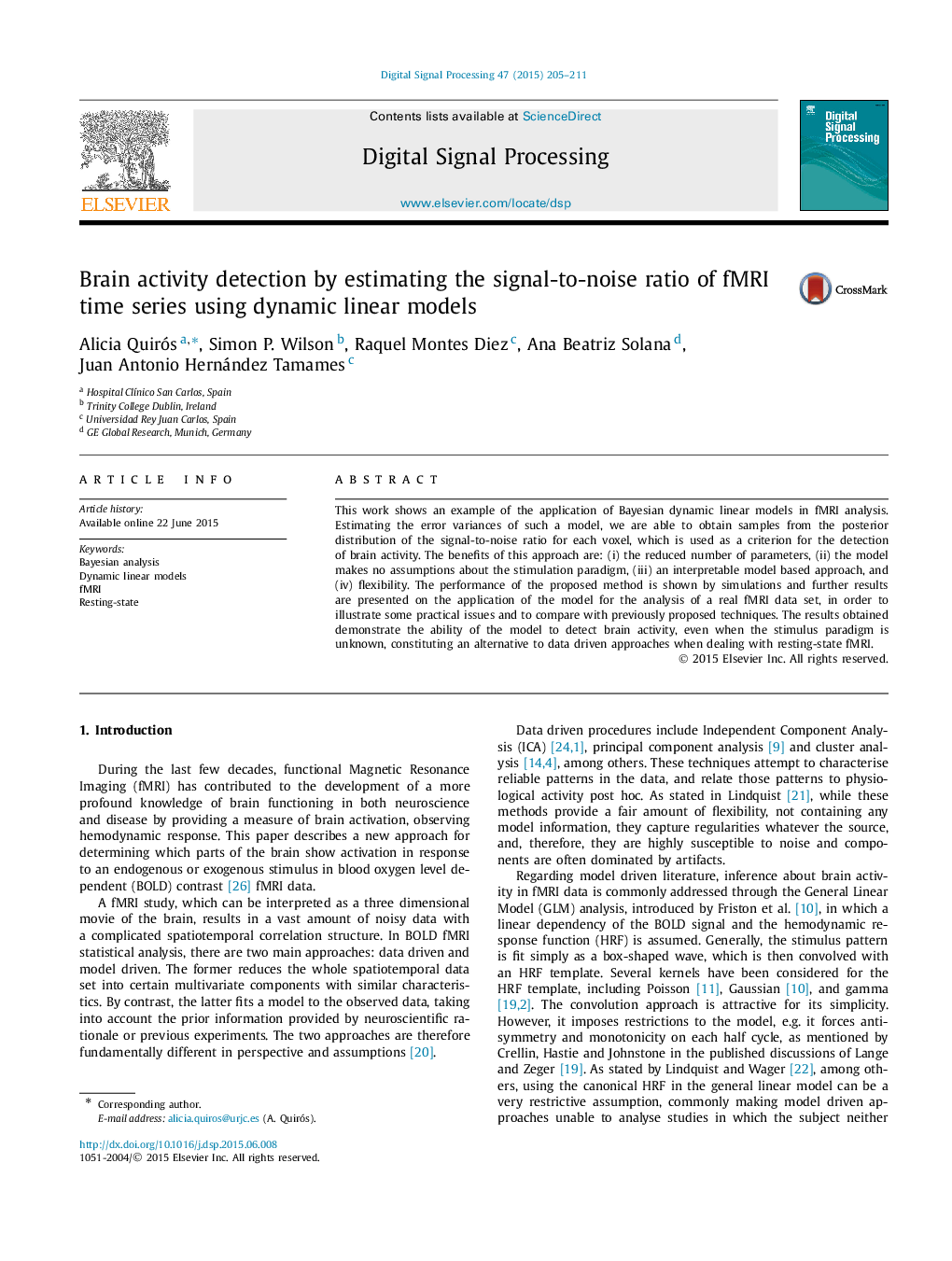| Article ID | Journal | Published Year | Pages | File Type |
|---|---|---|---|---|
| 560200 | Digital Signal Processing | 2015 | 7 Pages |
•We propose a new interpretable model-based approach to detect brain activity in fMRI.•The model makes no assumptions about the stimulation paradigm.•We demonstrate the ability of the model to analyse resting-state fMRI studies.
This work shows an example of the application of Bayesian dynamic linear models in fMRI analysis. Estimating the error variances of such a model, we are able to obtain samples from the posterior distribution of the signal-to-noise ratio for each voxel, which is used as a criterion for the detection of brain activity. The benefits of this approach are: (i) the reduced number of parameters, (ii) the model makes no assumptions about the stimulation paradigm, (iii) an interpretable model based approach, and (iv) flexibility. The performance of the proposed method is shown by simulations and further results are presented on the application of the model for the analysis of a real fMRI data set, in order to illustrate some practical issues and to compare with previously proposed techniques. The results obtained demonstrate the ability of the model to detect brain activity, even when the stimulus paradigm is unknown, constituting an alternative to data driven approaches when dealing with resting-state fMRI.
